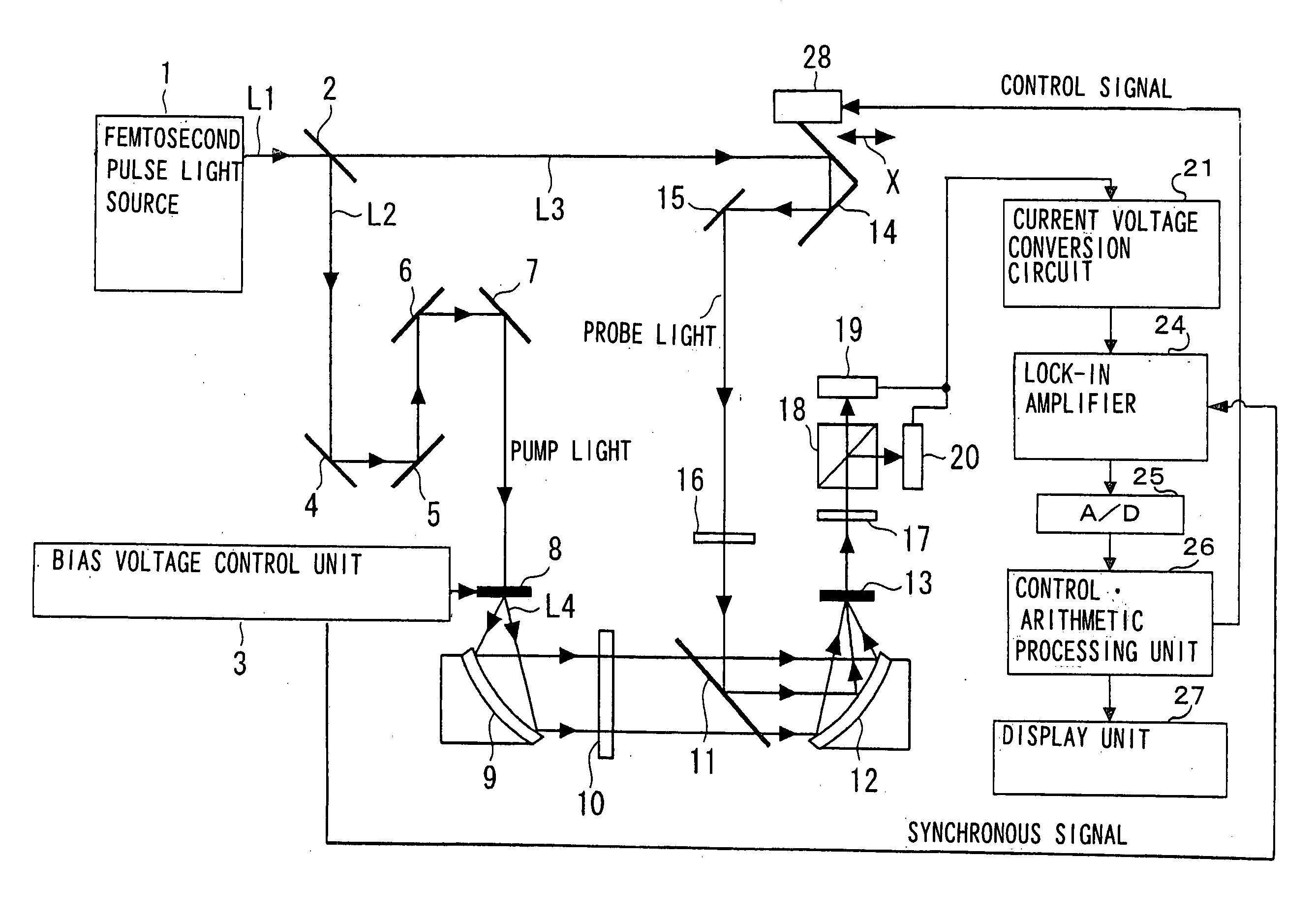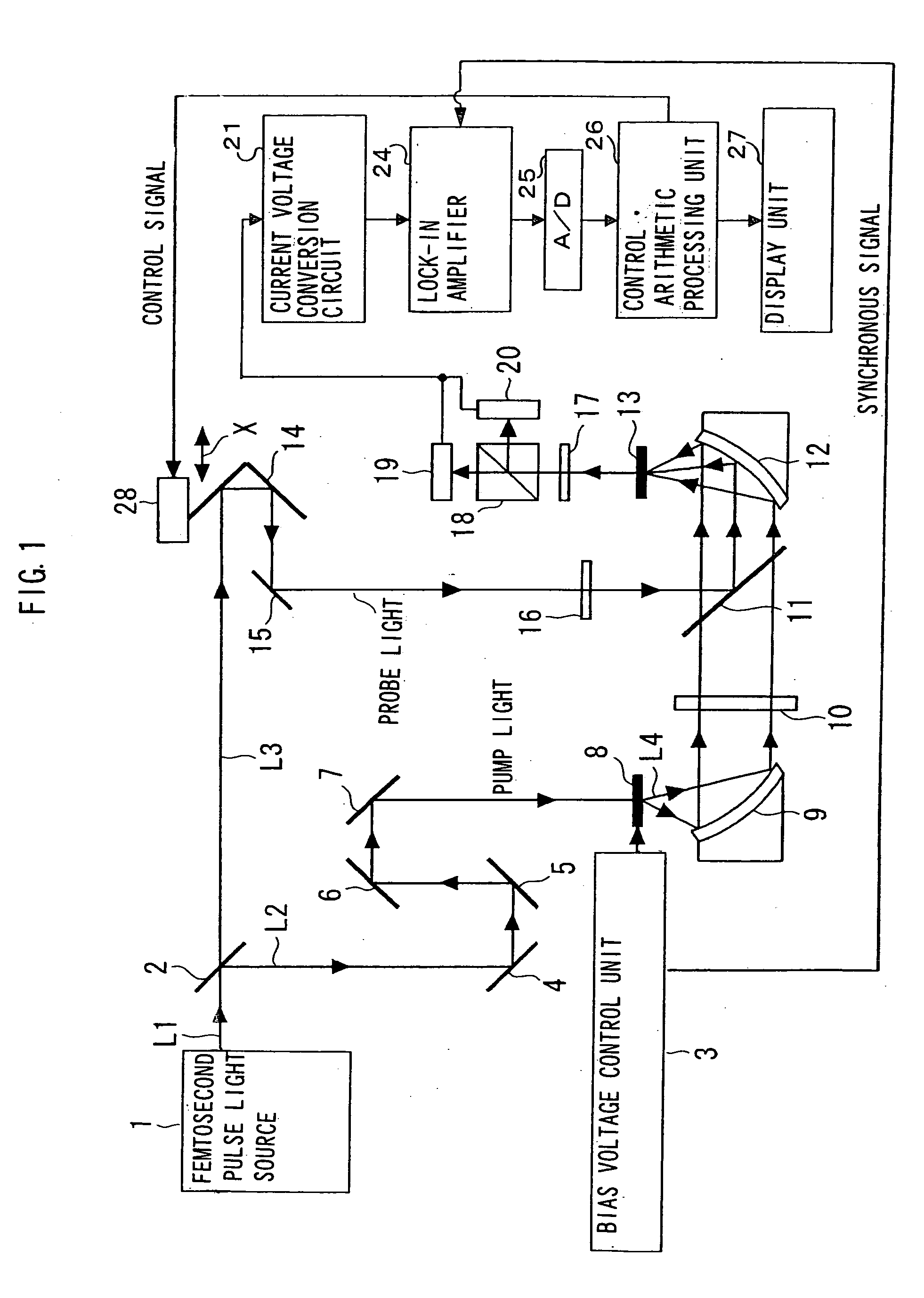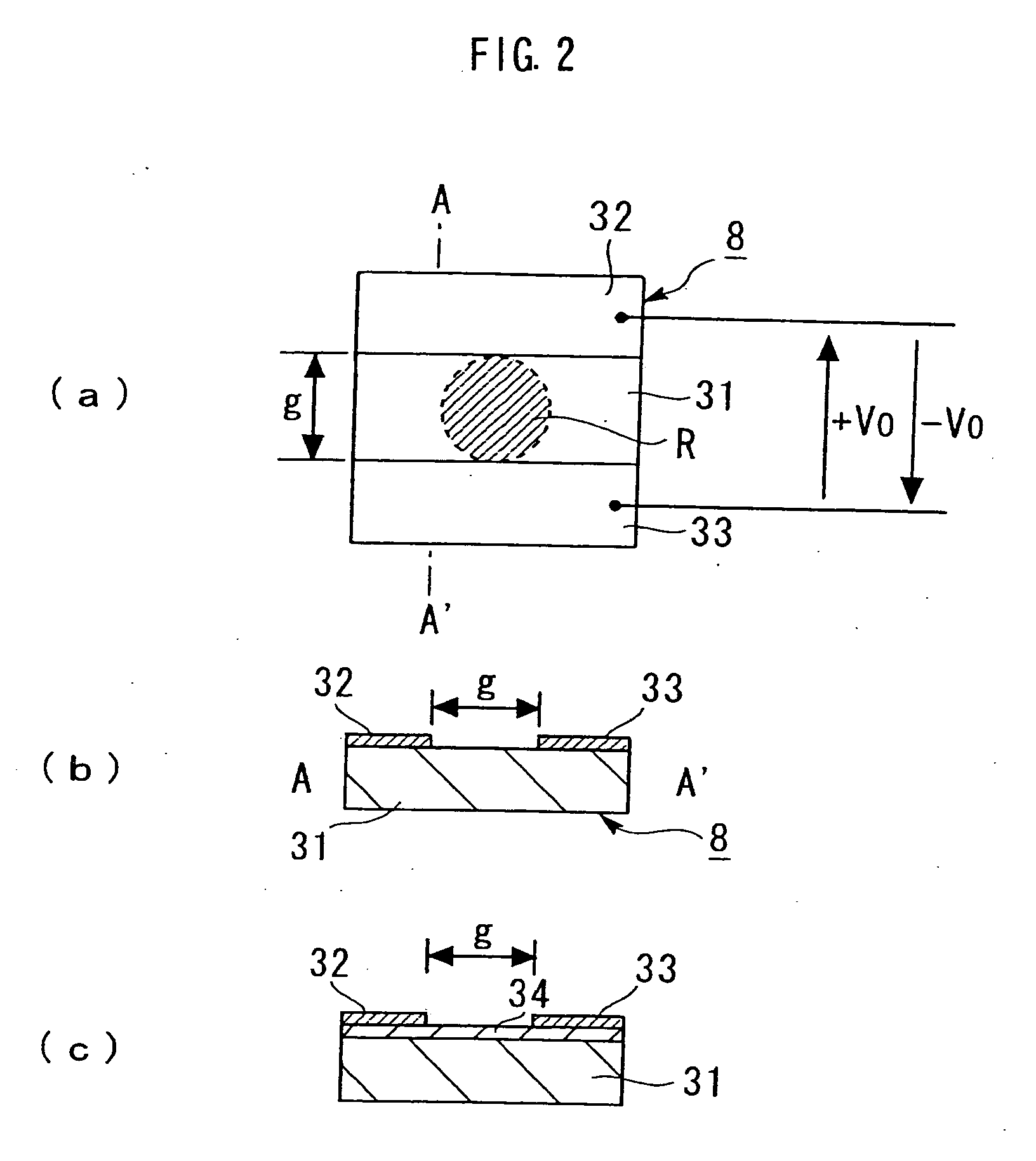Terahertz light apparatus
a light apparatus and terahertz technology, applied in the field of terahertz light technology, can solve the problems of wasting terahertz light, wasting terahertz light, and wasting terahertz light, and achieve the effect of only achieving lock-in detection
- Summary
- Abstract
- Description
- Claims
- Application Information
AI Technical Summary
Benefits of technology
Problems solved by technology
Method used
Image
Examples
first embodiment
[0037] FIG. 1 schematically illustrates the structure of the terahertz light device achieved in the present invention. FIG. 2 shows examples of the terahertz light generation element 8 included in FIG. 1, with FIG. 2(a) presenting a schematic plan view of the terahertz light generation element 8, FIG. 2(b) presenting a schematic sectional view taken along line I-I in FIG. 2(a) and FIG. 2(c) presenting a schematic sectional view of a variation of the terahertz light generation element 8 shown in FIGS. 2(a) and 2(b). FIG. 2(c) corresponds to FIG. 2(b).
[0038] In the terahertz light device in this embodiment, a femtosecond pulse light beam L1 emitted from a femtosecond pulse light source 1 is split into two pulse light beams L2 and L3 at a beam splitter 2. The femtosecond pulse light source 1 in the embodiment is constituted of a laser light source or the like. The femtosecond pulse light source 1 emits linearly polarized femtosecond pulse light L1 with a central wavelength of approxima...
second embodiment
[0070] FIG. 4 schematically illustrates the structure of the terahertz light device achieved in the second embodiment of the invention. In FIG. 4, the same reference numerals are assigned to elements identical to or corresponding to elements shown in FIG. 1 to preclude the necessity for a repeated explanation thereof.
[0071] The terahertz light device in the second embodiment is an imaging device that forms an image of a measurement object 10.
[0072] In the terahertz light device in the embodiment, a femtosecond pulse light beam L1 emitted from a femtosecond pulse light source 1 passes through a plane reflecting mirror 41 and is split into pump light L2 and probe light L3 at a beam splitter 42. The pump light L2 travels through a movable mirror 43 constituted by combining two or three plane reflecting mirrors and plane mirrors 44-46, is expanded at a beam expander 47 and is then guided to a terahertz light generation element 8 adopting the structure similar to that in the first embodi...
PUM
| Property | Measurement | Unit |
|---|---|---|
| bias voltage | aaaaa | aaaaa |
| central wavelength | aaaaa | aaaaa |
| length | aaaaa | aaaaa |
Abstract
Description
Claims
Application Information
 Login to View More
Login to View More - R&D
- Intellectual Property
- Life Sciences
- Materials
- Tech Scout
- Unparalleled Data Quality
- Higher Quality Content
- 60% Fewer Hallucinations
Browse by: Latest US Patents, China's latest patents, Technical Efficacy Thesaurus, Application Domain, Technology Topic, Popular Technical Reports.
© 2025 PatSnap. All rights reserved.Legal|Privacy policy|Modern Slavery Act Transparency Statement|Sitemap|About US| Contact US: help@patsnap.com



